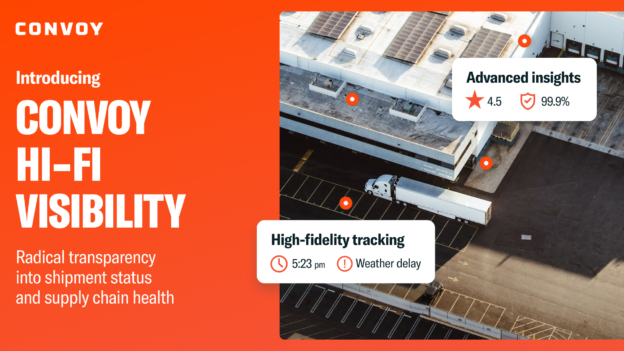The Vicious Cycle: Spot Market Volatility and Primary Tender Acceptance
Shippers • Published on March 29, 2018
It’s no secret that shippers have been faced with a particularly challenging freight environment over the past three quarters. The combination of newly-enforced ELD regulations and a strong economy have wreaked havoc on routing guides and transportation budgets across all modes, causing unprecedented volatility.

The statistic above, provided by DAT1 , references the fact that the number of loads moved via the spot market decreased from January 2018 to February 2018. This does not indicate the market slowed by 14%, but rather that primary carriers honored a larger portion of their contracted freight, leaving less volume to go “off guide” into the spot market.
Though rates have somewhat normalized back down from record levels in December and January, many in the industry believe that 2018 will continue to experience severe capacity challenges and that the current cooling is attributed to Q1 seasonality finally setting in after a wild second half of 2017.
Spot Market Activity is a Vicious Cycle
The DAT statistic and discussion above reference the decrease in spot market activity–and subsequent cooling of the market–in mid-Q1. But why did the spot market spike in the first place? To understand this we need to explore the effect of market dynamics on primary tender acceptance.
We know that truckload rates increase due to one or both of the following:
-
Increased shipper demand
-
Strong economy
-
Fruitful produce season
-
Holiday-driven consumer spending
-
-
Decreased carrier supply
-
Extreme weather
-
Holiday-related celebrations/paid time off
-
Department of Transportation Week
-
New regulation
-
In this case, the market has tightened due to both an increase in shipper demand, coupled with a decrease in carrier capacity:
-
The Strong Economy
Led to a sharp increase in shipper demand for truckload capacity, meanwhile;
-
Electronic Logging Devices (ELDs)
Decreased aggregate carrier capacity due to driving time lost to hours of service (HOS) enforcement, as well as exit from the market by carriers unwilling or unable to conform to new laws, exacerbating the effect of the existing driver shortage and aging driver base.
When one or more of these factors have a material impact on the cost of the truck, transportation providers will opportunistically reject a larger portion of their primary freight to insulate themselves from losses (brokers) and free up capacity to take advantage of an inflated spot market (brokers and assets).
Those forgone primary shipments then fall through the routing guide to the spot market, driving even more demand for spot capacity and increasing rates further. Therein lies the vicious cycle – high-priced spot loads beget even higher-priced spot loads.
Eventually, the market adjusts to the initial shock, either through an increase in supply or reduction in demand. As the market cools, prices normalize and the opportunity cost of accepting primary freight is reduced. As a result, carriers dedicate more of their capacity back to primary freight, leading to restored rates of tender acceptance and fewer opportunities that fall to the spot market. At this point, the cycle is broken and the market, temporarily, is restored.

Surviving the next Freight Capacity Crunch
In an environment of economic and regulatory uncertainty, it is paramount to the success of any serious shipper to anticipate and plan for capacity crunches like the one experienced over the last few quarters. While it’s impossible to fully insulate your company from the negative impacts of the vicious cycle, the tips below can help you work with your carrier partners to maintain high tender acceptance even through periods of market volatility.
-
Account for historical tender acceptance performance.
when selecting a primary carrier. While rates may look great on paper, unless they are honored with high tender acceptance, the anticipated savings are negated because of the premium paid on the spot market to cover rejected loads. Convoy prides itself on maintaining industry-leading primary tender acceptance!
-
Maximize lead time.
Tendering freight with more notice allows transportation providers to secure capacity – 3PLs buy better, asset carriers can reserve equipment and plan routes more efficiently – enabling higher tender acceptance on primary lanes.
-
Routinely update routing guides.
Review carrier performance – both tender acceptance and service – removing bad performers and promoting strong carriers from backup to primary in the routing guide. Contracts are meant to be partnerships, but your partners will only benefit you to the extent they are held accountable.
-
Partner with data-oriented transportation providers.
. Long dwell times, inconsistent or surging volume, short lead times, and a variety of other metrics have an adverse effect on tender acceptance. Most shippers fail to understand how these drivers impact their supply chain and cost structure. Convoy is proactive in sharing data-driven insights to help shippers uncover and address network-, lane-, and facility-level challenges to improve performance and cost structure.
For more information or to join the Convoy network, email shipper@convoy.com or call 855.5.CONVOY



